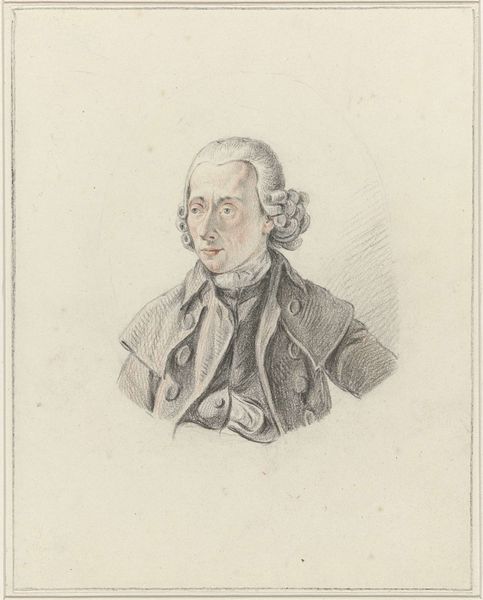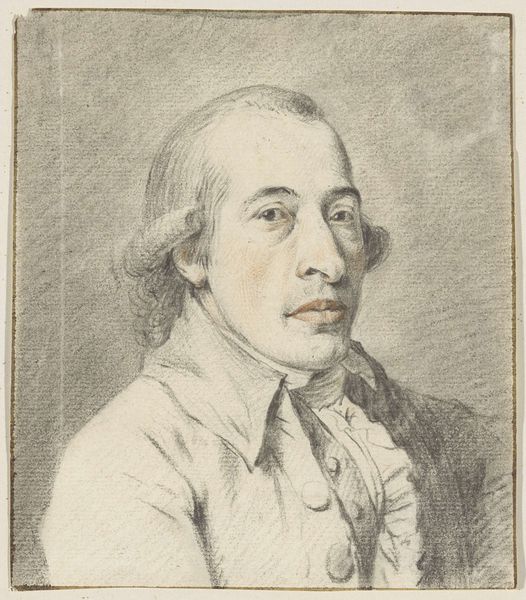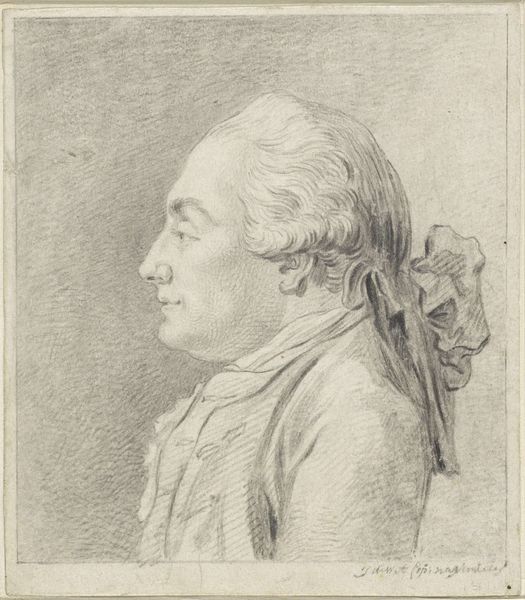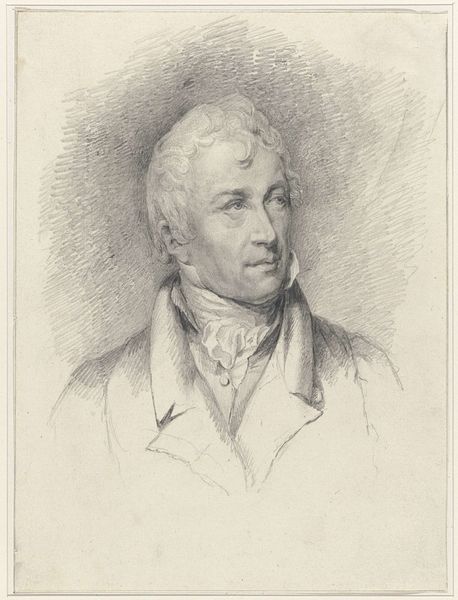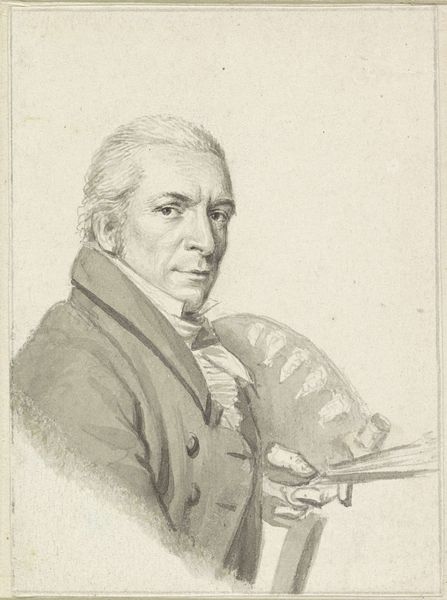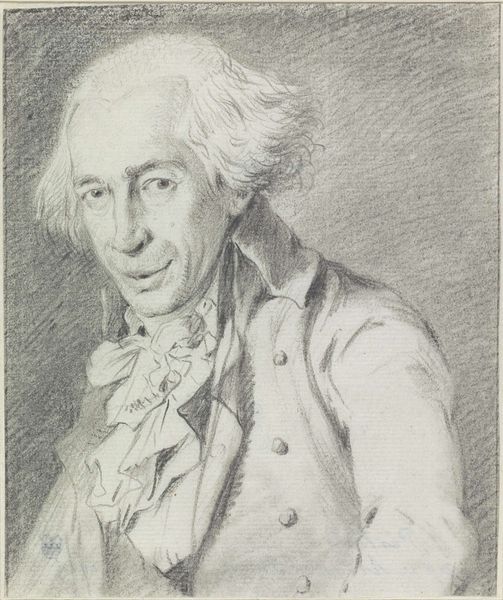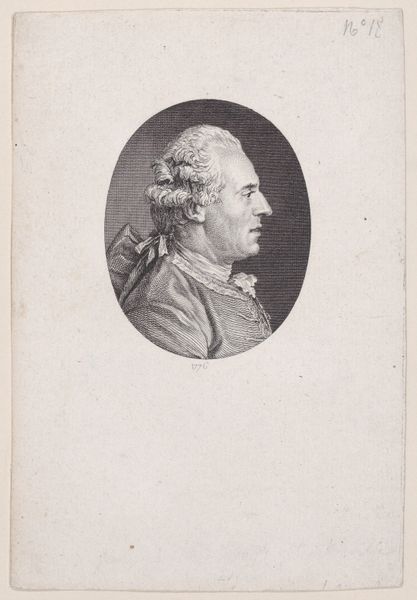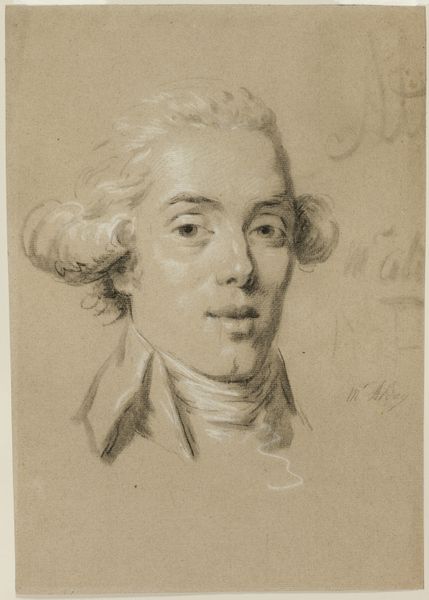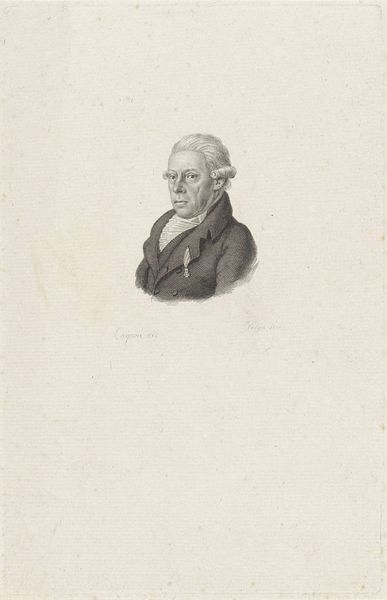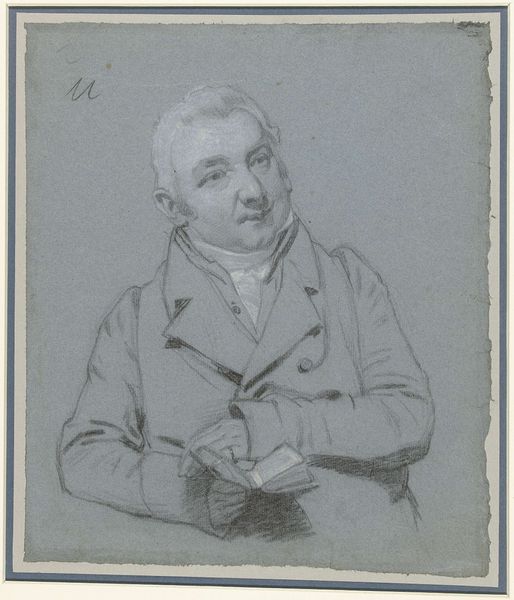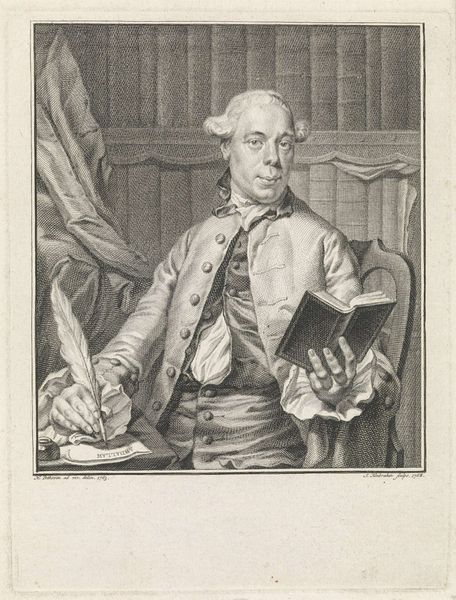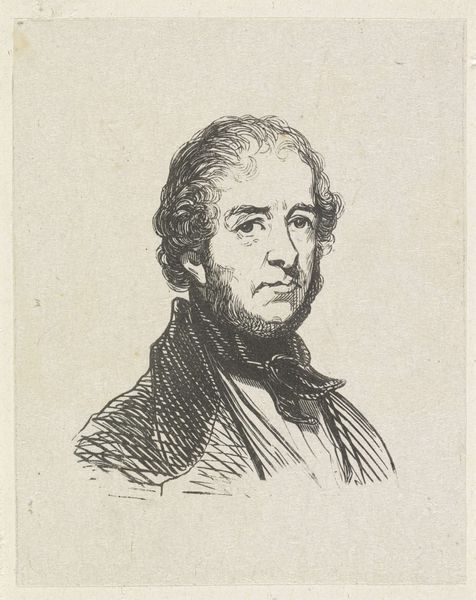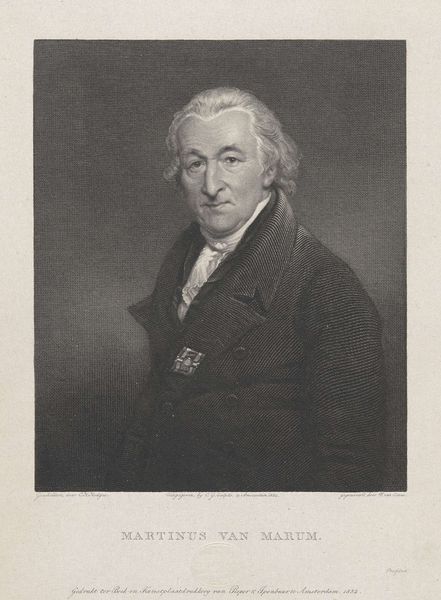
drawing, pencil
#
portrait
#
drawing
#
neoclacissism
#
caricature
#
charcoal drawing
#
pencil
#
history-painting
Dimensions: height 172 mm, width 152 mm
Copyright: Rijks Museum: Open Domain
Curator: This is Wybrand Hendriks’ “Portret van Augustijn Claterbosch”, a drawing from the late 18th century, currently residing here at the Rijksmuseum. Editor: It's strikingly intimate, almost unsettling. There's a raw vulnerability in the subject’s gaze, despite the formality of the attire. It hints at the power dynamics inherent in portraiture. Curator: Indeed. Hendriks uses a combination of pencil and charcoal, notice the subtle layering and hatching techniques. This choice of materials gives it a certain textural quality, almost like woven fabric. It’s a highly skilled approach to creating form and volume. Editor: Thinking about it historically, it's hard not to consider what Claterbosch represents. He’s undeniably a member of the Dutch elite. What anxieties might have been present for a man like him in this era, right on the cusp of revolutions that would shake the foundations of power? Curator: Interesting point. One could analyze his jacket: its cut, buttons, and fabric, for clues about societal rank and the material culture. Did Hendriks portray his social status faithfully? How would this rendering affect Claterbosch and viewers in the period? Editor: It is compelling, but perhaps also reflects the constraints of patriarchal structures on self-expression at the time, at least in this public-facing genre. Consider who had the luxury of sitting for such a piece—and conversely, whose stories remain untold, un-portrayed. Curator: I see the composition as quite radical; by presenting Claterbosch this way—almost informally with direct eye contact— Hendriks potentially disrupts conventional representation of status through portraiture in Dutch painting traditions. Editor: Absolutely, because by inviting that dialogue with us, centuries later, this single portrait, rendered using modest, widely-available materials like pencil and charcoal, provokes a complex discourse about representation, agency, and history. Curator: Viewing Hendriks’ process reminds us about the ways even quotidian things— pencils, paper, charcoals and such— are involved within artmaking which ultimately challenges hierarchical artistic concepts in novel and important aspects. Editor: A wonderful encapsulation, which forces me to reckon with the biases woven into historical narratives!
Comments
No comments
Be the first to comment and join the conversation on the ultimate creative platform.
